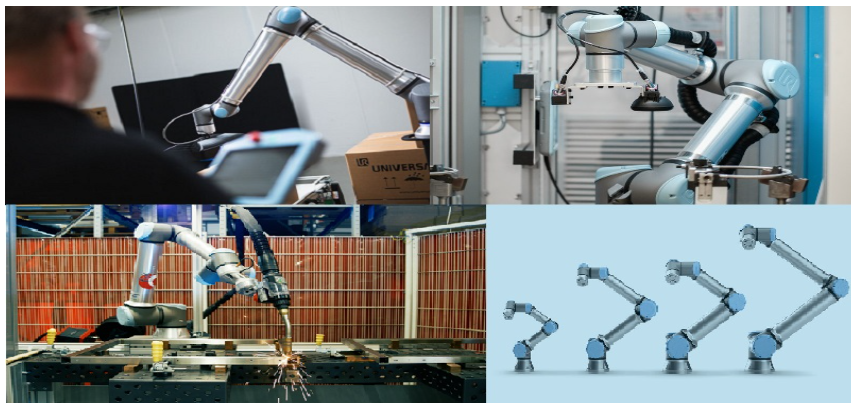Robot arms in manufacturing: Enhancing efficiency and quality
As the manufacturing world becomes increasingly automated, robotic arms have emerged as a flexible and powerful resource poised to revolutionise industrial production. Equipped with advanced sensors, market-leading precision capabilities and sophisticated AI technologies, robotic arms can perform complex tasks in much less time and with better accuracy than any human worker.
From enhancing the speed of production to delivering superior product quality control, robot arms are driving tangible improvements in many aspects of the industry while at the same time drastically reducing labour costs. In this article, we’ll explore some key benefits of incorporating robotic arms into a manufacturing workflow – from streamlined processes to improved safety standards – so you can determine if they’re suitable for your operation.
Overview of robotic arms in manufacturing
Robotic arms have revolutionised manufacturing by providing efficient and precise assembly line operations. These robot arms consist of a series of joints and end-effectors that can move in multiple directions, mimicking the movements of a human arm. They can perform repetitive tasks with speed and accuracy while maintaining consistent productivity.
Robot arms can also be programmed to perform complex tasks such as welding, painting, and material handling, providing flexibility that is impossible with traditional machinery. As a result, many manufacturers are turning to robot arms to improve their production processes, reduce costs, and increase their competitiveness in the global market.
Benefits of using robotic arms for increased efficiency and quality
One of the key advantages of using robots in manufacturing is their ability to perform tasks much faster than human workers. With advanced sensors and precision technology, these machines can complete tasks with incredible speed and accuracy, improving manufacturers’ productivity levels. It also allows for increased output of products without sacrificing quality.
In addition to speed and precision, robotic arms offer a consistent output level that is not affected by factors such as fatigue or human error. This consistency leads to improved quality control and reduced waste, resulting in cost savings for manufacturers. With the ability to consistently produce high-quality products, manufacturers can establish a strong reputation for reliability and customer satisfaction.
Different types of robot arms used in manufacturing
Robot arms come in various types and sizes, each meticulously designed to suit specific tasks and environments. Let’s explore some common types of robot arms commonly used in manufacturing. First, we have articulated robot arms, known for their exceptional versatility in handling complex tasks. With multiple joints allowing for a wide range of motion, articulated robot arms can navigate through intricate paths and precisely perform various actions.
Next, we have cartesian robot arms, which excel in delivering precise and repetitive movements. With their linear axes and orthogonal design, cartesian robot arms are ideal for tasks that require accurate positioning and alignment. Another type is the SCARA (Selective Compliance Assembly Robot Arm), which combines vertical and horizontal movements with a rigid structure. SCARA robot arms are often utilised in assembly and pick-and-place applications, where speed and precision are crucial.
Last but not least, we have collaborative robots, also known as cobots. These robots are designed to work alongside humans, ensuring a safe and efficient collaboration. With advanced sensors and sophisticated control systems, cobots can adapt to the presence of humans and assist them in various tasks.
Challenges associated with integrating robotic arms into the production process
Despite the many benefits of using robotic arms in manufacturing, some challenges must be considered when integrating these machines into production. One crucial factor is the initial investment required for purchasing and implementing robotic arm technology. However, the long-term savings and increased efficiency achieved through their use can offset this cost.
Another challenge is ensuring employees are adequately trained to work alongside robot arms. As these machines become more prevalent in manufacturing, workers must understand how to operate and maintain them safely. Additionally, the implementation of robotic arms may also require changes in workflow and processes, which may take time for employees to adjust to.
How companies can benefit from investing in robotic arms for their production process
Despite the challenges, incorporating robotic arms into a manufacturing workflow can benefit companies significantly. Manufacturers can gain a competitive advantage with increased efficiency, improved quality control, and reduced labour costs. Additionally, by automating repetitive tasks, employees can focus on more complex and creative work, leading to job satisfaction and potentially increasing overall productivity.
Furthermore, as technology advances, robotic arms’ capabilities are also improving. Companies that invest in this technology now will be better positioned to adapt and stay competitive in a constantly evolving industry.
Conclusion
Robotic arms have transformed the manufacturing industry by providing increased efficiency, improved product quality control, and reduced labour costs. Companies can choose the best fit for their production process with different types of robot arms available for various tasks. Though there are challenges to consider in integration and implementation, the long-term benefits of investing in this technology make it worthwhile for manufacturers looking to stay ahead in their industry.









